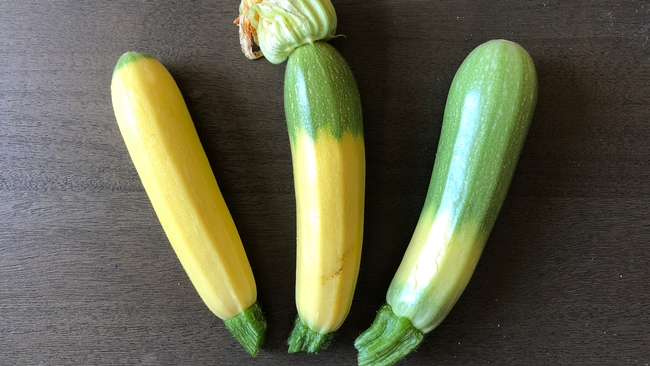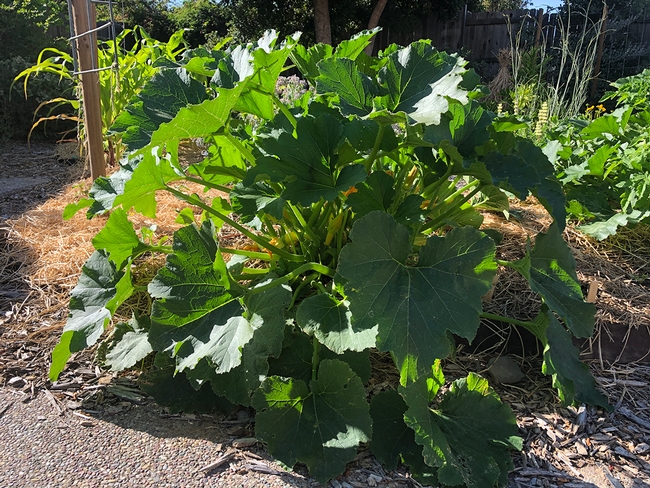Saving and Planting Seeds from the Perfect Summer Squash Hybrid
Everyone says you can't plant seeds from hybrid tomatoes, squash or any of the other tasty foods we grow at home. It's also well-known that no one is the boss of us in our own gardens.
Actually, planting the seeds of hybrids is one of the easiest ways to start plant breeding at home. This type of plant breeding is called “dehybridization,” which is the process of growing out successive generations of a hybrid plant with the ultimate goal of producing an open-pollinated version that's as similar as possible to the hybrid.
Last summer I planted ‘Cube of Butter' hybrid yellow summer squash (Cucurbita pepo) and it more than lived up to its name. This superior summer squash is widely acclaimed as the tastiest of all summer squash. In my garden, the plants were hardy, the flavor was incredible and the productivity left me almost completely sick of eating squash. By July, a few fruits that got completely away from me had plumped into hard-shelled clubs.
I first read about dehybridizing in Carol Deppe's book Breed Your Own Vegetable Varieties, and this seemed a perfect opportunity to try it. I have nothing against buying a $4 pack of seeds every year to enjoy this squash, but I'm also interested in saving seeds and trying my hand at vegetable breeding. So I carried in those past-due squash and dug out all the seeds I would need.
Open-pollinated (OP) Versus Hybrids (F1)
First, a few definitions.
Open-pollinated (OP) varieties are your typical heirlooms and really any plant that will reproduce by seed mostly true-to-type, meaning they will closely resemble the parent plants. These are varieties that are planted together and allowed to cross pollinate among themselves, either through self-pollination like beans and tomatoes or cross pollination like squash and corn.
Hybrids are very different. A hybrid is an intentional cross-pollination of two different inbred varieties. The result is a F1 (first-generation) hybrid. Any seed labeled F1, it's a hybrid. Hybrids are much more predictably uniform than open-pollinated varieties. There's also something special about a commercial hybrid, usually in terms of productivity or disease resistance. Because the plants don't reproduce true-to-type from seed, you'll have to buy new seed every year.
Dehybridizing starts with saving seeds from F1 hybrid plants. You grow out a hybrid variety, save the seeds and plant them. That second generation is the F2, and you don't really know what any individual plant will be. There is a chance you'll get something similar to the F1, but what will most likely happen is that the plants will resemble either parent lines of the F1 which could be very different.
First Steps to a Dehybridized Squash
In February I started nine seeds in pots in my ready-made, plastic bin cold frame. In late March I planted them out in the garden. Within two weeks, armies of earwigs ate every single one down to seed leaves.
This should not have been a surprise. I keep the garden beds under deep alfalfa mulch year-round, which is great for soil health but also incredibly effective for cultivating tens of thousands of earwigs every spring.
The demolished squash seedlings didn't all completely shrivel, so I didn't pull them out. It was the kind of destruction that sets a project back a year. I spread a few shakes of iron phosphate and spinosad bait, which is labeled for organic gardening, hoping to clear out the earwigs before planting melon starts.
Over the next three weeks, there came a slow flush of new leaves and stems on first two then three destroyed squash plants. In late April I pulled the others out and watched my three survivors unfurl. By early May it was impossible to tell anything at all bad had ever happened to them.
One thing I didn't count on is the size of these plants. A summer squash plant will take up 4 feet of space. That's a lot of space in any garden. In my initial, and characteristically optimistic, planting I spaced the original nine seedlings a foot apart. In May, the root systems reached past the furthest leaves. Next year I'll be sure to give every plant room so it doesn't outcompete and shade everything nearby.
It Gets Weird
Cube of Butter is a bright yellow squash with incredible flavor. If you cut it, there is a tinge of green on the inside. Cook this squash in olive oil because it doesn't need a bit of butter to taste great. I was expecting something similar to the F1 fruit. That's not what I got.
While one of the three plants is producing a completely light green squash, the other two have been producing fruits that are half green and half yellow. In a little searching online I found only one variety of squash that comes out bi-colored like this. It's called ‘Zephyr,' a well-appreciated F1 hybrid.
None of the squash are coming out all-yellow. If all nine original plants had survived, maybe I would see more variation in fruit color that I don't with just three plants. Maybe I lost a plant that would have produced all-yellow fruit.
So far, I have cooked and eaten the bi-colored fruits. The taste was good, but not quite butter in squash form.
So will I save and replant seeds from these bi-colored F2 fruits? Sure. I just read something from Carol Deppe where she recommends planting seeds from all the F2 plants before choosing what to save with the intention of keeping only seed from plants with the qualities you want. And besides, Seed Savers Exchange recommends saving seed from five to ten plants to maintain a variety. I'll plant more of the F1s next year.
The taste is fine, and there is some novelty in a bi-colored summer squash, something I never expect to see in the grocery store. It's still a month or two until I'll want to pull the plants. Let's see how tired I get of eating squash.




Posted by Kathy Klobas on May 25, 2022 at 10:21 AM